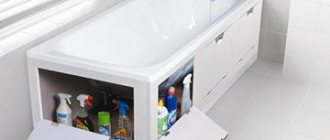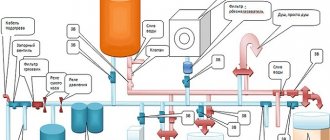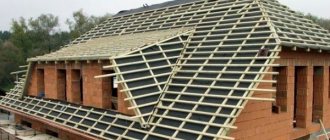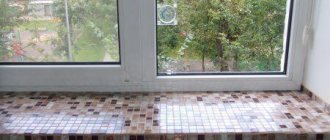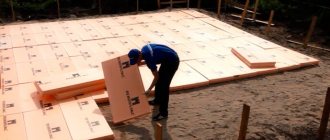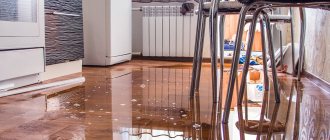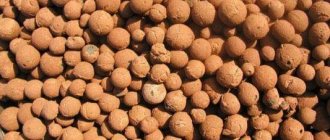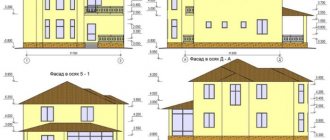Izospan is an insulating film coating. The main purpose of the film is to ensure that the original thermal insulation characteristics are maintained throughout its entire service life. It is difficult to imagine a modern construction project without the use of various types of thermal insulation. Mineral wool, Penoplex, Izolon, Izover, various polystyrene foams and simply polystyrene foam - all these materials require their own protection.
Thermal insulation materials practically envelop our house, retain heat on frosty and rainy days, create comfort in the hot summer, preventing the penetration of heat flows. But how to protect the thermal insulation belt from negative atmospheric phenomena? Reliable protection from moisture, rain, damaging winds is designed to be provided by 100% polypropylene, with the proud name - Izospan .
To create a barrier at the stages of the construction process, to perform the function of protective insulation for thermal insulation, this is the true purpose that isospan vapor barrier successfully fulfills. Despite its apparent simplicity, the material differs by type.
We bring to your attention – Izospan instructions for use. Figure it out: which side to lay the isospan on. Consider the isospan technical characteristics, and the installation method.
Worthy competitors of isospan:
- Tyvek vapor barrier;
- Vapor barrier TechnoNIKOL;
- Vapor barrier Nanoizol;
- Vapor barrier Ondutis;
- Vapor barrier Yutafol.
Before moving on to a detailed review, it should be clarified that the films are presented by the manufacturer in a wide variety and have different purposes. Vapor barrier films and membranes are divided into absolutely vapor- and water-tight and partially permeable to moisture only in one direction. Some of the materials successfully complement thermal insulation, enhancing its characteristics.
Characteristics and differences
Izospan is a non-woven building material. It is produced in the form of films and membranes, which are designed to protect and insulate surfaces. Izospan goes on sale in rolls.
Materials are divided into three groups:
- Windproof. This includes all insulators marked with the letter A. They are needed to retain internal heat and prevent winds from blowing through the insulation. The material does not allow moisture to pass through, but is capable of removing evaporation.
- Fully waterproofing. They are marked with the letters B, C, D. And they do not allow water or evaporation to pass through.
- Energy saving. They are marked with the letter F. They have the same characteristics as the previous group, but have a metallized reflective layer.
From the above it can be understood that only the first group has the ability to pass steam. It is precisely this that should be used to insulate residential premises, since all living organisms emit fumes into the atmosphere. And if the liquid in the form of steam is not able to leave the room, then the humidity in it will soon rise critically.
Types of vapor barrier Source stroychik.ru
The remaining groups are solid insulators. But the latter has a thin metal coating that can reflect heat, preventing it from leaving the room. This feature requires an air gap between the mirror layer and the other material. It must be at least 3.5 cm.
And before you think about how to properly lay Izospan, you need to fully study the brand on the product. The first letter on the marking is often followed by others. They indicate additional insulation properties. For example, the letters M or S indicate the presence of reinforcement. And the abbreviation of small letters “fix” indicates the presence of applied strips of glue along the edges. And when buying such a product, you don’t have to worry about tape.
Izospan A
The material is produced in the form of a diffusion membrane, which is capable of completely retaining any liquid. But evaporation passes through it easily. Therefore, if it is positioned correctly, it serves as reinforcement and protection of thermal insulation. It also does not allow the latter to accumulate moisture from evaporation coming from the room.
Vapor barrier marked A Source roofing façade34.rf
The exception is Izospan A (base). This material serves only as a wind barrier and, in addition to steam, it also allows moisture to pass through. It is used to insulate the ceiling located above the facade, in which there is good air circulation. Place the membrane on top of the mineral wool, on the subfloor side. And it allows the insulation to get rid of not only steam, but also water.
The temperature range for operating the material is quite wide. The insulator can be used from severe frosts of -60 °C to serious heat of +80 °C. Izospan A is able to retain its characteristics even when exposed to ultraviolet radiation. But the truth is only for 3-4 months. Then a sharp decline in performance begins.
The insulator is able to withstand a fairly large tensile load, and some materials even have fire-fighting properties. Based on these parameters, group with the letter A is best used for ventilated facades and frame-type enclosing structures. Also for a roof that has double sheathing and a slope of at least 35 degrees.
Waterproofing for metal tiles Source stoydiz.ru
See also: Catalog of companies that specialize in home insulation
Basic rules for working and instructions on which side to lay Izospan A to the insulation:
- The material on the wall begins to be mounted from below.
- The same sequence must be maintained when working on a pitched roof.
- On horizontal roofs, Izospan is laid starting from any of the walls.
- The next panel must be laid with an overlap on the previous one. Ten centimeters are enough on the walls, and ceilings and roofs should have at least fifteen centimeters.
- If there are no adhesive strips on the edges, then all connections are fixed using double-sided tape.
- For a clearer connection to the rafter system, it is better to use a special sealing tape.
- For material with clear markings (only one letter A), it makes no difference which side the insulator is applied to the insulation.
- Izospan, which has double markings (AS, AM and others), must be unfolded so that the logo is on the outside.
Installation of vapor barrier Source dolgostroi.pro
The last point is very important.
If you make a mistake, fumes will begin to accumulate in the insulation. It will get wet, which will lead to the loss of its positive properties. The process will speed up significantly when moisture begins to partially penetrate from the outside as the other side allows steam to pass through. And there is enough vapor everywhere.
Preparation for installation of a water vapor barrier layer
Laying a vapor barrier involves carrying out a number of preparatory work. First you need to select materials for all layers of the so-called pie, and also decide which vapor barrier is best for the floor. This “pie” consists of the following stages (starting from the top):
- Decorative floor covering.
- Plank floor.
- Vapor barrier.
- Counterrail.
- Insulation (counter slats between boards).
- Waterproofing.
- Rough floor.
Preparation begins with the subfloor. All boards, joists and other wooden parts must be treated with a special antiseptic composition that prevents rotting, the appearance of fungus, and also protects against insect attacks.
If we are talking about repairing the floor, and not about constructing a new building, then the finished floor boards, floor covering and existing vapor barrier on the floor must first be dismantled. All debris must be removed and then the wooden structure must be treated with an antiseptic.
Izospan B
Unlike the previous material with a mark in the form of the letter A, all other markings are vapor barriers. And since they do not allow evaporation to pass through, they completely protect the insulation from moisture. Therefore, Izospan is placed in front of the insulation, and not behind it, as in the previous case. This is if you look at it from the room. They are produced in the form of film, and it is usually two-layer.
Izospan marked B, consisting of polypropylene, is used to strengthen the ceiling insulation and protect it from moisture. The material has the same temperature range for use as Izospan A. The characteristics of water resistance and ultraviolet resistance are also the same.
In order to understand how to properly lay Izospan with such markings, you need to carefully examine the sides of the material. One of them is perfectly smooth. On the other there are the smallest fibers. So they do not allow moisture to accumulate on the walls.
Izospan B Source opotolkax.com
The lint on the surface helps water roll down quickly. Therefore, the smooth side of the material should be adjacent directly to the insulation, without any gaps. The latter is necessary before a rough surface. Otherwise, moisture will not be able to move down.
Izospan C, D
Marking C indicates that the material is well suited for insulating insulation under the roof. It is often used instead of a waterproofing substrate under metal tiles. It is also laid when arranging concrete floors in places where humidity exceeds specified standards.
Marking D indicates that the insulator has good UV resistance. This circumstance and the fact that the material has greater strength allows it to be used as a temporary roof. Otherwise, it is used like the previous insulator.
There is no need to guess which side to lay the Izospan with these markings on. The materials also have a rough surface on one side. So she should look into the room. And the smooth side must be adjacent to the insulation.
Stages of vapor barrier installation Source krepezhinfo.ru
Manufacturer company
All categories of Izospan are manufactured by Izospan, which has its own production facility in the Tver region. The company produces various membrane films with vapor barrier, moisture-repellent and energy-saving properties.
Products undergo strict quality control at all stages of production and have international certificates of conformity. Thanks to these features, the products are in consistently high demand in the domestic and European markets.
Izospan F
A distinctive feature of an insulator marked F is a metallized layer on one of the surfaces. It allows you to reflect the heat coming from the room back. This ability not only enhances the characteristics of the insulation, but also allows you to maintain a favorable atmosphere for as long as possible.
Izospan F is also used as a vapor barrier and is used in the same places as materials marked B or C. But it is more widespread to enhance the characteristics of heated floors. And the layout is as follows.
First, insulation is laid on the floor slabs. Then the vapor barrier is laid with the reflective layer facing up. After this, the heating system is installed. In this case, moisture does not penetrate downwards, and the insulation retains its characteristics. And the underfloor heating system does not heat the ceiling of the neighbors, but transfers all the heat into the room.
The purpose of vapor barrier work
Wooden structures are very susceptible to moisture. This can cause the wood to swell and warp. The floor is an area that can come into contact with moisture on both sides. Soil moisture, as well as the constantly changing microclimate of the room, negatively affects the floor of the building.
In kitchens and bathrooms, water can often spill on the floor, although the humidity in these rooms is always high. This two-way bombardment of moisture can very quickly destroy the foundation or lead to the appearance of mold or mildew in the house.
In view of this, it is advisable to hydro and vapor barrier the floor in a wooden house. Thanks to such building material as Izospan for flooring, it is possible to qualitatively protect wood from moisture and condensation.
Briefly about the main thing
To work correctly with Izospan, you must carefully study the instructions, as well as the product labeling. How fully the insulation will perform its functions will depend on which side the insulator is adjacent to the insulation. An error in location will cause the heat insulator to quickly fail.
Loss of the positive characteristics of the insulation will lead to the formation of an atmosphere in the room unsuitable for life. Expensive repairs will be required. After all, you will have to open the walls and completely change both insulators.
Ratings 0
